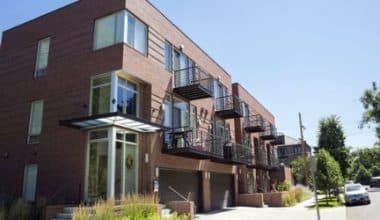It is crucial for landlords and property managers to ensure their tenants are content at all times. This is especially important during the first few days after the tenant moves in. Landlords and managers have a responsibility to ensure that their renters are completely satisfied with their new homes. Tenant improvement is the alteration made to a rental property by the landlord in preparation for a new tenant. This article explains the meaning of commercial tenant improvement and how to get a contractor for it. We also explained what tenant improvement allowance accounting is all about. Let’s dive in!
What Is Tenant Improvement?
Tenant improvement, often known as leasehold improvement, is the modification or upkeep performed by the landlord on rented property. Usually, these adjustments are made to better suit the needs of a specific renter. These alterations are typically requested by the renter, particularly in a business setting. However, there are several complexities with regard to tenant improvement that could make it challenging to comprehend.
Types of Tenant Improvement
The following are the types of tenant improvement:
#1. Tenant Improvement Allowance
Tenant control over the leasehold improvement process relieves the landlord of any unnecessary work, especially if the work is extensive. In most cases, the landlord will include clauses in the lease that allow the tenant to make improvements within a certain budget. A single price or a price per square foot is typically provided for this. Either the landlord or the tenant might make the initial payment to the remodeling or construction firm. The tenant is responsible for any overages in project costs.
#2. Rent Discount
Tenants may be eligible for rent reductions from the landlord in exchange for leasehold improvements. The tenant may be eligible for rent relief in the form of a free month or a reduced rent during specified times of the year if this provision is included in the lease. The tenant can save unnecessary construction costs as a result. Also, the tenant has the same level of oversight and control over the lease upgrades as they did with the TIA. The tenant is also on the hook for any overages.
#3. Building Standard Allowance
A build-out describes this potential action as well. In this scenario, the landlord offers the tenant a selection of possible upgrades. The renter has more time to focus on running their business because the landlord handles project management. Tenants don’t always get the improvements they want, which might be detrimental to their company’s success. They are responsible for any further modifications they request.
#4. Turn Key
This type of tenant improvement is typically carried out at the outset of the lease. The tenant often provides cost estimates and submits plans, while the landlord acts as the project manager and foots the bill.
Examples of Tenant Improvement
Tenant improvement, also known as leasehold improvement, is the alteration done to a leased property by the tenant in order to make it more suited for the tenant’s intended use. Tenants often hire contractors to make these upgrades, although landlords will sometimes agree to manage the project on a turnkey basis. Tenant and landlord may share build-out responsibilities in other situations.
The following are examples of tenant improvement:
- Repainting
- New carpet
- Lighting configurations
- HVAC updates
- Plumbing upgrades
- Electrical work
- Full renovation
Tenant Improvement Allowance
Landlords typically compensate tenants for the cost of constructing tenant improvement through the payment of tenant allowance or tenant improvement allowance. This is sometimes not paid outright but rather is spread out over the course of rent. Tenant improvement costs are often quoted in terms of dollars per square foot of occupied space. The landlord is footing the bill for all of the initial tenant renovations, including the hard and soft costs, using this sum of money.
However, the stipend will not cover the cost of furniture or decorations, as these are not considered tenant improvements. Only maintenance and repairs to commercial properties will be considered. And if the tenant’s actual improvement expenses exceed the amount, the tenant is responsible for the difference.
What Qualifies You for Tenant Improvement Allowance?
The following are things that do not qualify and those that qualify for tenant improvement allowance:
| QUALIFIES | DOES NOT QUALIFY |
| New carpet | New office furniture |
| HVAC repair | New computers |
| Door and window replacements | Sidewalk repaving |
| Lighting updates | Elevator maintenance |
| Project management costs | Internet installation |
Negotiating the Payment Method for Your tenant improvement allowance
The tenant improvement allowances are not typically handed to you personally. Instead, the tenant improvement allowance limit is used to pay contractors and suppliers, and anything over that is your responsibility as the tenant. Or, the landlord may decide to “waive” your rent for a month or two, in which case you’ll need to make sure you don’t waste the “savings” on anything other than your goals.
You should prioritize the first option if you can choose between the two. There is a chance that the Internal Revenue Service will treat the tenant improvement allowances you receive from your landlord as taxable income if you use that money to pay the rent and utilities. This may not happen if the landlord actually has the money and is responsible for making the payments.
Negotiating the Size of Your tenant improvement allowance
If you are aware of the anticipated cost of your upgrades, you will be in a better position to negotiate for sufficient tenant improvement allowances. Space planners and designers should be relied upon for guidance. If the landlord is unwilling to provide a TIA that works within your budget, you may still find it worthwhile to make the necessary investments yourself.
You will take on the risk (and cost) of building overruns because you will be responsible for paying for anything beyond the TIA. If the landlord builds instead of you and your contractor, the risk level rises. Since the landlord is not responsible for covering any expenditures in excess of the TIA, there is little incentive for the landlord to do so. Therefore, you may find it more convenient to propose an alternative method of addressing enhancements.
Negotiating How You Can Use Your Tenant Improvement Allowance
Don’t allow your landlord to fool you into thinking that your TIA is a freebie. Capital improvements, or renovations to a structure that will benefit tenants in the future, are often the responsibility of the landlord. Landlord should presumably pay for the work under your TIA if it is a capital improvement. If the work is actually customized to your preferences or your business’s peculiar needs, and the landlord has still paid for it, the landlord is in no worse position than before. Landlords undoubtedly set their asking rents at a level that partially makes up for the TIA they’ll be paying you.
Commercial Tenant Improvement
The real estate definition of a commercial tenant improvement is a customized change that a building owner makes to a rental space as part of a lease agreement to adapt the space to match the needs of a particular tenant. Tenant improvement allowances (TI allowances) are a common form of landlord financing for commercial tenant improvement. It is usually expressed as a dollar amount per square foot or as a flat rate that is negotiated with the landlord. Tenants are liable for covering any costs not covered by their tenant improvement allowances.
Tenant improvement allowances are not mandatory, and landlords are under no obligation to provide them in a competitive lease market. However, in recent years, it has become a common way to entice tenants to lease office space. Most landlords are flexible and willing to work with tenants to include tenant improvement overages in the monthly lease payment if the improvements exceed the allowances. Make sure to ask your potential landlord about this option while negotiating your lease. You might not have to come up with additional money for modifications after the lease’s start date beyond the allowance.
Tenant Improvement Contractor
When choosing a tenant improvement contractor, it’s important to choose someone who can do the job efficiently and affordably. The following are the considerations you need to keep in mind when choosing a tenant improvement contractor:
#1. Opt for Experience
Although these traits are admirable, experience is the most valued asset in the commercial building industry. If you want your business tenant improvement project to be successful, use a commercial remodeling contractor with a proven track record. They are cognizant of the potential influence of local, state, and federal regulations on the endeavor. They are familiar with the area and have connections with businesses and government agencies. Also, they can anticipate and prevent major difficulties by drawing on their experience with previous initiatives. Finding a tenant improvement contractor with the necessary experience is crucial. No, not what they’ve seen on the Internet. Hiring a professional contractor will increase the quality of work, reduce costs, and alleviate stress.
#2. Verify All Means of Contact
Do you want to save money while providing your tenants with a facility that is uniquely designed for their needs? To that end, it’s important to hire a commercial renovation contractor who shows interest in your needs and is willing to explore different options with you. The construction process goes more smoothly and with less anxiety if everyone is on the same page and communicating openly and often about any issues that may arise.
#3. Remember That Creative Solutions Expand Your Options
Partnering with a tenant improvement contractor who isn’t afraid to go outside the box is essential if you want to get the most out of your investment. Tenant improvement plans that look like everyone else’s can get the work done, but unique layouts that make the most of your available area and budget can yield greater results. Professional tenant improvement contractors weigh the benefits and drawbacks of numerous options. They provide first-rate work by drawing on knowledge accumulated from previous projects.
#4. Recognize the Value of Professionalism
A commercial refurbishment project runs more smoothly when handled by a skilled professional that takes pride in their job.
#5. Put Quality First
While budget is an important consideration when hiring a tenant improvement contractor, it shouldn’t be the decisive factor. Value can be placed on well-done work and professional service. Consider factors outside price when evaluating tenant improvement construction bids. Does the contractor’s proposal show that they fully grasp the scope of the project? Will the contractor employ trained workers and high-grade supplies? Do they provide guarantees or warranties for their work?
Tenant Improvement Allowance Accounting
IRS regulations prohibit improvement-related deductions. However, renovations are subject to depreciation as they are considered structural elements of the structure. As long as these requirements are met, depreciation deductions are permitted by the IRS. The depreciation deduction can be claimed by either the landlord or the tenant, depending on who actually performed the job. The previous cap of $500,000 was raised to $1,000,000 by the new tax law.
Any enhancements done during the same period that don’t exceed the company’s capitalization limit are recommended to be expensed. If the costs of the upgrades are more than this threshold, they must be capitalized and amortized over the lease term or the lesser of the two useful lives.
Tenant Improvement Allowance Accounting if the Landlord Owns the Improvements
If the landlord is the one who paid for the upgrades, they will need to account for the depreciation of the tenant improvement over a certain time frame as fixed assets. If the lease term is shorter than the useful life of the tenant improvement, then the shorter period is used to calculate the depreciation period. A depreciation period of five years would be appropriate if carpeting were laid with the expectation that it would need to be replaced in five years, and the remaining lease term was seven years. If the lease term is only two years, rather than seven, then the depreciation period should also be for only two years, as this is less than the new carpet’s useful life.
Tenants who are confident that their lease will be renewed often agree to have the depreciation period extended by the length of the new lease, up to the asset’s useful life. If a new tenant moves in during the period that depreciation is being calculated for an asset, and that tenant does not require any changes to the asset, then the depreciation schedule can remain unchanged. The leftover amount is reported as a loss on the income statement if the property is destroyed or damaged.
Tenant Improvement Allowance Accounting if the Tenant Owns the Improvements
The tenant should account for the TIA as an incentive or tenant enticement, capitalize the cost, and depreciate it over the lease term if the tenant owns the improvements. Since the landlord will be acquiring any leftover assets, any salvage value is ignored in the depreciation calculation. A tenant must cancel the remaining debt if the renting time is too short.
Why is Tenant Improvement Important?
When relocating to a commercial space, a company must ensure that it has access to a minimum set of amenities. Therefore, it is crucial for a firm to have the freedom to adapt its new building space to its own needs. Among these adjustments is the installation of new walls and rooms to make the office suitable for the needs of the company. To ensure that all requested modifications are covered by the tenant improvement allowances, which we explained earlier, they must always be specified in the lease agreements.
The tenants aren’t the only ones that benefit from this. Most tenant improvement projects involve making structural and permanent alterations, which might be to the landlord’s advantage in the long run. This is because the landlord can recoup all of the money spent on the renovations if and when new tenants move in. Tenant improvement may or may not be offered by the landlord depending on the state of the leasing market. That’s why it’s so important to discuss and agree upon all of the lease terms with the landlord before making a move.
What is The Problem With Tenant Improvement?
When moving into a new place, business owners often make the mistake of spending too much money on renovations. Avoid making major investments in enhancing rented office space. You probably can’t take them with you, and the new tenant may not appreciate them as much as you did.
Tenant Improvement vs. Building Improvement
Tenant improvement, also known as leasehold improvement or build-outs, takes place inside an existing building. They concentrate on a certain area that has only one tenant and is leased by them. Tenants benefit from these renovations since they will enhance the tenant’s own business to the detriment of other tenants.
Since several tenants would benefit from enhancements made to shared areas, these enhancements should be considered building enhancements rather than leasehold enhancements. In most cases, tenants of an apartment building pool their resources to pay for repairs to shared spaces.
Is tenant Improvement Tax Deductible?
Tenant improvements are not tax deductible. However, property owners can write off some or all of their depreciation if they make modifications to the building, as the IRS recognizes those additions as part of the structure.
Is Tenant Improvement an Asset?
On the financial statements of the landlord, tenant improvements are recorded as a regular part of capital expenditures. The total amount of the payments is shown as an asset on the landlord’s balance sheet. After then, the depreciation charge will appear on the landlord’s monthly profit and loss accounts.
Where Do Tenant Improvements Go on a Balance Sheet?
Tenant improvements are assets and are included in the property, plant, and equipment category of the balance sheet’s non-current assets.
Are Tenant Improvements Depreciated or Amortized?
Tenant improvements are technically amortized instead of depreciated. This is due to the fact that the lessor, and not the lessee, is the legal owner of the improvements. During the lease term, the lessee has only an abstract right to utilize the asset. Acquired intangible rights are not depreciated but rather amortized over time.
Can You Capitalize Tenant Improvements?
If the cost of leasehold improvements exceeds the amount that can be expensed by the company, the excess amount should be capitalized. If so, write them off as an expense as they occur. Furthermore, if these costs are capitalized, they will be depreciated over the shorter of their useful life or the remaining lease period.
Final Thoughts
A tenant improvement allows a tenant to make changes to a rented property in preparation for occupancy. A company and its landlord might negotiate a price for these upgrades during the lease-signing process. However, if the total cost of the build-out exceeds the sum originally agreed upon, the tenant may be responsible for covering the difference.
Related Articles
- ALLOWANCE FOR KIDS: Should Kids Be Given Allowance?
- Financing Home Improvements: Options for Financing Home Improvements
- BEST HOME IMPROVEMENT LOAN IN 2023
- HOW TO START A PROPERTY MANAGEMENT COMPANY: Tips for Starting a Property Management Company
- WORKING FROM HOME: How to Do It and Jobs Ideas






